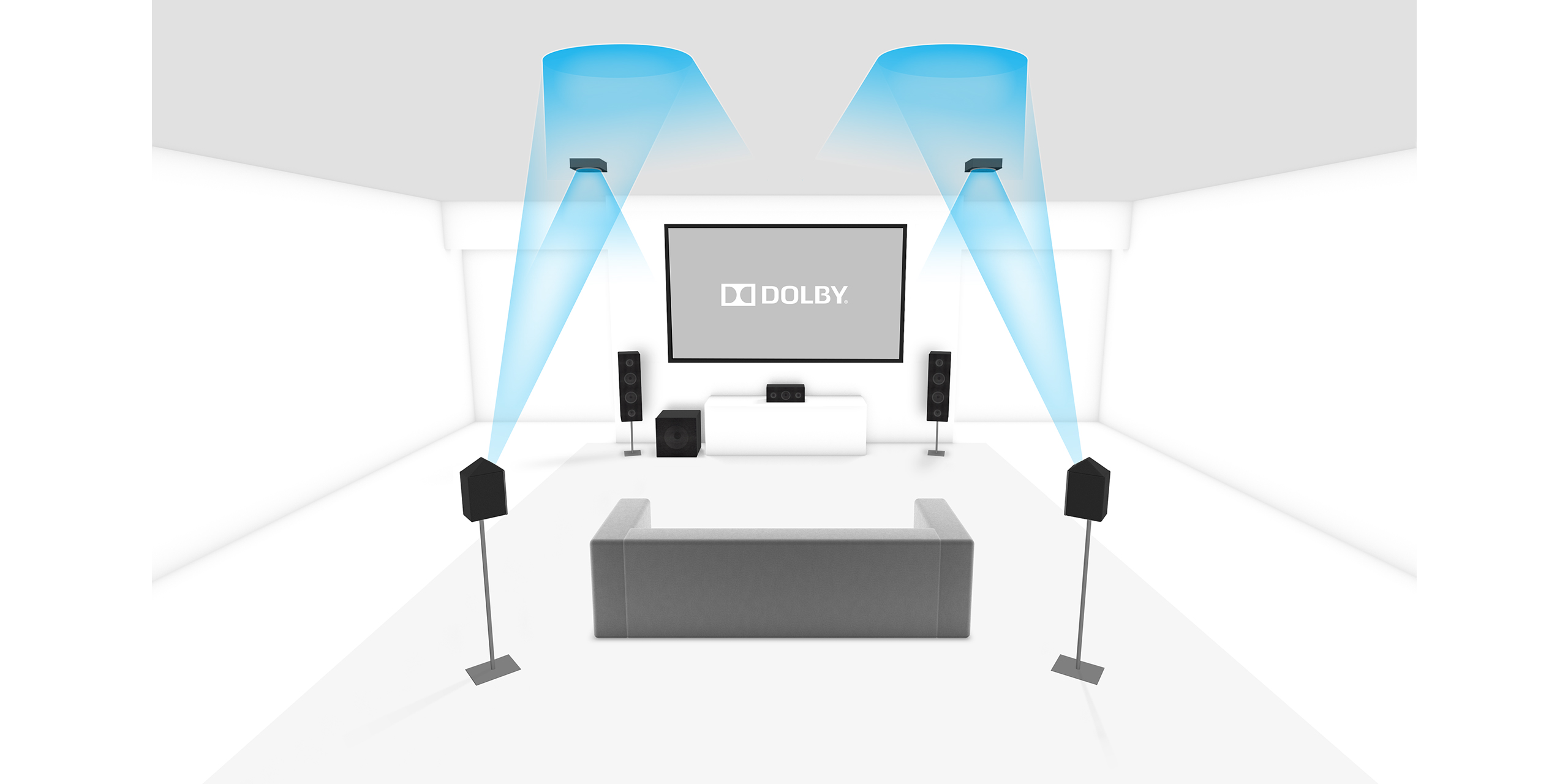After hours of measuring, I have come to the conclusion that full-fat Dolby Atmos doesn't work in normal homes
And the reason why isn’t just to do with audio quality

Normally, planning a new system is fun. Whether it’s choosing the separates to use in a new hi-fi rack, or components in a home cinema setup, I have always enjoyed the planning stage.
At least, that used to be the case. But then I subjected myself to one of the most frustrating processes I have ever undertaken, only to see it end with abject defeat.
My ongoing attempt to get a full-fat, off the rack, 5.2.2-channel Dolby Atmos system into my home proved, ultimately, fruitless. It ended with the sad conclusion that most UK houses are simply too small to accommodate such a set-up – and this after weeks, nay months, of effort.
To be clear, before our Australian readers once again tell me “to just build a bigger house” as happened when I discussed a similar failure when planning a 100-inch TV setup in my lounge, I am talking specifically about the UK, where homes are smaller.
For those who have never visited our rainy shores, most UK homes, like the Edwardian terraced house I occupy right now, don’t have massive living rooms or bedrooms compared with what you might get in the US or Australia.
In fact, according to most of the estimates I’ve seen, including this study featured in The Guardian and my rough and ready research looking at floorplans on RightMove, most UK lounges are around 17 square meters (184 square feet) in area.
That means most are around the size of, or perhaps a touch bigger than, a regular, single-car garage.
The latest hi-fi, home cinema and tech news, reviews, buying advice and deals, direct to your inbox.
That’s ample space for a TV and soundbar, of course, but when you factor in the sheer volume of air you need to accommodate a 5.2.2 set-up's haul of speakers (centre, left and right, twin surrounds, twin subwoofers and twin height channels) that space rapidly gets eaten up. As I was to find when playing Tetris in an attempt to fit all of them into my lounge.
Is it possible? Yes. Especially if you're able to go custom install. But in my experience with trying off-the-shelf systems, doing so means committing a couple of cardinal AV sins.
For starters, most UK living rooms are too small to place all the speakers optimally, especially if you plan on having a big screen – and I am planning on having a big screen.
I want to use a UST (ultra short throw) projector to throw a 120-inch, or even 150-inch image. A screen that size means that, if I want to view films comfortably, my sofa is going to have to be close to the rear wall.
Editor’s note: As a rule of thumb, you should have between three-and-a-half to four metres' (11-13ft) viewing distance for a screen this size. I prefer a longer distance, towards the four metre-plus mark: it means not having to move my head constantly, or worry about eye strain.
Thanks to the dimensions of my room – standard for most terraced houses – to accommodate that and still have the speakers at the correct angle, my rear channels would have to sit fairly flush to the wall.
After hours of marking potential layouts and putting my planned sofa in various positions, the best I can get with a sensible viewing distance places the rear speakers less than 10cm from the back wall.
This is a problem. At that distance, the speakers won’t have room to breathe; running them this close to the back wall will result in a lumpy low-end that even my two planned subwoofers won’t be able to save.
This is one of the key reasons we, and Dolby in its official setup guidance, tell you to consider positioning and give your speakers space when setting them up – even without Atmos. Look at the official diagram below as an example.

The second cardinal sin focuses on the realities of shared living space: to do this properly, I would have to take over the entire lounge.
If you don’t live alone, that could well be the final nail in the coffin. I am not wealthy enough to have an excess of rooms, and my lounge is frequently used by others – my partner for instance – for things other than watching movies.
That means, as well as having to accommodate other furniture in the room, I am afforded a finite amount of patience when it comes to running cables and having large, easy to topple items – loudspeakers, say – “lying around” the shared space.
I’m not going to go over the conversation we had verbatim – this is a family friendly website, after all. Let’s just say I got to appreciate my limits fairly quickly, once I had floated the idea of drilling speakers into the ceiling, after barely selling the idea of getting a two, not four-seater sofa to accommodate the other channels.
For now, then, my dreams of a full-fat Dolby Atmos system are on pause – at least in the lounge.
My one ray of hope comes from our proposed attic conversion. I have already called dibs on one of the smaller, but better proportioned, rooms we have planned. Even here, though, thanks to the low ceilings, I am limiting my planned setup to a non-Atmos 5.2 arrangement, or possibly a step-down soundbar system.
Tiny violin sonata-worthy, first-world problem? Sure. Either way, after all my futile faffing, I remain convinced full-fat Dolby Atmos is a step beyond what most normal (UK) houses can accommodate.
MORE:
These are the best surround sound packages we have reviewed
Our picks of the best projectors
We rate the best Dolby Atmos soundbars

Alastair is What Hi-Fi?’s editor in chief. He has well over a decade’s experience as a journalist working in both B2C and B2B press. During this time he’s covered everything from the launch of the first Amazon Echo to government cyber security policy. Prior to joining What Hi-Fi? he served as Trusted Reviews’ editor-in-chief. Outside of tech, he has a Masters from King’s College London in Ethics and the Philosophy of Religion, is an enthusiastic, but untalented, guitar player and runs a webcomic in his spare time.
You must confirm your public display name before commenting
Please logout and then login again, you will then be prompted to enter your display name.
